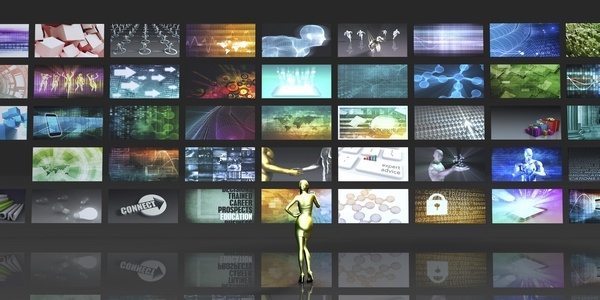
In November 2015, the Harvard Business Review published a far-reaching article by David C. Edelman and Marc Singer titled Competing on Customer Journeys that encapsulated well the problems of catching the interest of newly empowered consumers. These, the narrative goes, have become used to mining information resources, abandoning any semblance of brand monogamy in a proactive quest to get the best prices and best services for themselves. Effectively they go on a journey, engaging in an extended consideration and evaluation phase which can lead to a purchase decision or can take them elsewhere.
The challenge facing companies — and in our context, the challenge facing broadcasters and operators — is to try and build a diversion on that decision journey; to shape the path and shorten the consideration stage, to compress or even entirely eliminate the evaluate stage, and thus deliver customers into a loyalty loop and ensuring they stay there.
So far, we’re not in a particularly new territory, but what Edelman & Singer say is that they have identified out in the real world a change in strategy. To date firms have largely been reactive to the customer journey, improving the efficiency of existing journeys or identifying the roadworks and pain points along the way. Now, they say, that is changing, and what we’re seeing is the mainstream establishment of what they refer to as “aggressively proactive” strategies; of shaping the paths and directing the outcomes.
“Companies building the most effective journeys master four interconnected capabilities: automation, proactive personalization, contextual interaction, and journey innovation,” they write. “Each of these makes journeys “stickier”— more likely to draw in and permanently capture customers.”
Personalization and Interaction
Proactive personalisation and contextual interaction is something that we at VO have been championing for a while now: arguing that it is one of the best ways of engaging with viewers and encouraging precisely that short-circuited loyalty loop that Edelman & Singer mention.
Indeed, our own Content Discovery and Personalization platform employs a blend of sophisticated content discovery algorithms that combine together to power an advanced hybrid recommendation engine and allow operators to realise four powerful benefits: optimiation, personalization, socialization and growth.
Engines in general are set to become more powerful though, not just in the broadcast industry but across all industries looking at refining the tailored services they offer. Currently, the research and development effort falls into four distinct areas.
The first is to reframe the way that firms think when providing recommendation services, the idea being to build a user experience powered recommendation engine from the ground up using a number of different building blocks — algorithms, widgets, trigger behaviours and more — and present them in a coherent way, an approach we have already explored with COMPASS.
The second strand is trying to work out what the viewer wants based on contextual information and thus add a predictive element to recommendations. This is where we start crossing over into the field of data analytics and blend user provided information with more obvious data (day, time, season), information provided by a device (what they’re watching on, geo-location, even if friends are in the vicinity), and even data that might seem fairly esoteric (weather, sports results and so on). All of this information affects what people want to watch at any given moment and crunching through the numbers gives contextual recommendation engines a decent stab at figuring out what that might be.
Data is also extremely useful in the back-end; for assessing what works and what doesn’t, for making tweaks in the UI to a small percentage of users and tracking relevant KPIs. It is also useful for assessing the health of a catalogue, estimating the number of probable views left in old content that is about to expire, and automatically selecting what titles are worth renewing the rights on and what should fall by the wayside (whole blogs are devoted to alerting people to the shows and titles that fall off the back of Netflix at the end of every month).
And finally, with licensed metadata services growing in both scope and popularity, multiple sources of licensed metadata can be connected together to provide an impressively deep-level micro-tagging of content.
A Personal Future
Add all this capability together and you start heading into the territory of smart personalisation that Brett Sappington, Director of Research, Parks Associates wrote about for us in his guest blog post The Industry in 2020: The Rise of Personalisation. “The future for the TV industry will be far more customised and adaptive to consumers in discovery, experience, and content,” he wrote. Back in January 2014, The Atlantic, for instance, estimated that Netflix had created 76,897 unique ways to describe types of movies. That number has probably grown since too.
Personalization is not the saviour of the industry; nor the golden bullet that will hold off competition. But for broadcasters and operators it is a vital tool in the wider machinery of directing those consumer journeys and building new paths, especially when folded into a holistic TV Everywhere approach.
Equally though, as Edelman & Singer say, automation, proactive personalization, contextual interaction, and journey innovation themselves are only part of the story. “Although [these] capabilities all rely on sophisticated IT, they depend equally on creative design thinking and novel managerial approaches,” they write.
The future of many industries is less about selling products and more about managing customer journeys. And the immediate future of the firms that work in them is about adapting swiftly to that way of thinking. This is why we in VO put a lot of effort in designing our services and products with personalization in mind, so that each step in the customer’s journey is fully adapted to their needs and wishes.
Here, where personalization plays a major role. Sign up now for a revolution in how to launch, run and maintain TV services. Click below to be notified of the upcoming launch:



